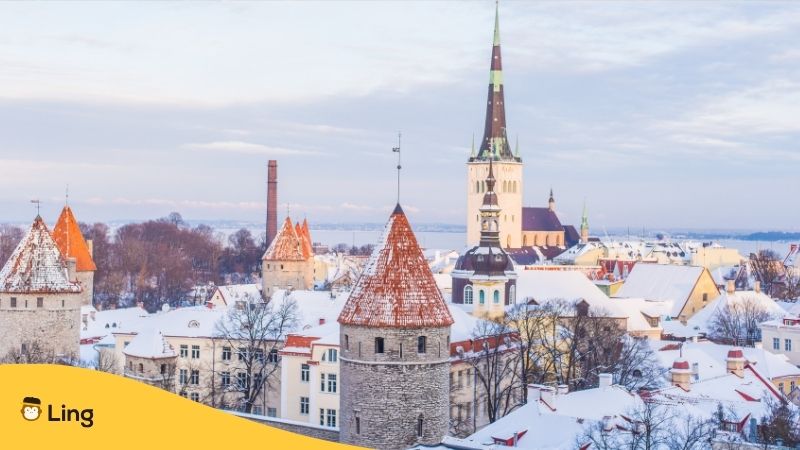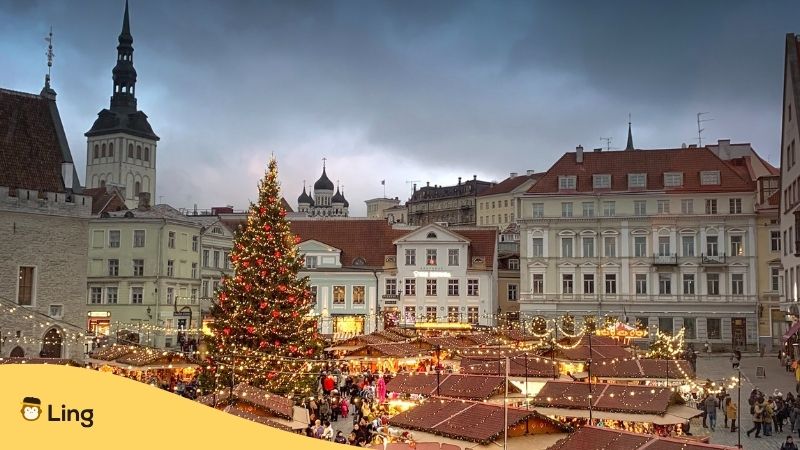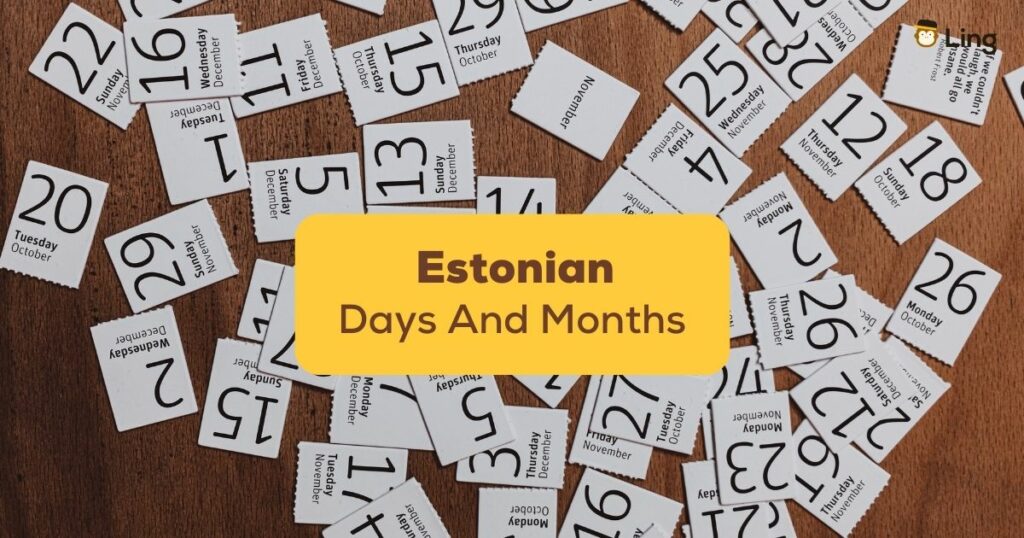Estonia, a country with a population of just over 1.3 million people, is located in the Baltic region of Northern Europe. Its geographical location, with long, harsh winters and relatively short summers, has significantly influenced its calendar. On the other hand, the Estonian calendar, like many others, has a mix of both ancient pagan traditions and modern influences.
So let’s look at the Estonian days and months, as they define the yearly rhythm of this tiny country on the Baltic Sea.
Days Of The Week
The Estonian names for the days of the week are closely related to those in other European languages, as some are derived from the names of celestial bodies and pagan gods.
You won’t have much trouble remembering the first four, as they follow a simple pattern: “Esmaspäev” comes from “esmas päev,” meaning “first day,” corresponding to Monday. Then we have “second day” (Teisipäev), “third day” (Kolmapäev), and “fourth day” (Neljapäev). The last three are a bit different.
Here are all of them in English and Estonian:
| English | Estonian |
| Monday | Esmaspäev |
| Tuesday | Teisipäev |
| Wednesday | Kolmapäev |
| Thursday | Neljapäev |
| Friday | Reede |
| Saturday | Laupäev |
| Sunday | Pühapäev |
Months Of The Year
The Estonian month names are more straightforward and resemble their counterparts in other European languages, with most of them being derived from Latin. However, each month in Estonia has its own characteristics, which we’ll explore in the next section.
| English | Estonian |
| January | Jaanuar |
| February | Veebruar |
| March | Märts |
| April | Aprill |
| May | Mai |
| June | Juuni |
| July | Juuli |
| August | August |
| September | September |
| October | Oktoober |
| November | November |
| December | Detsember |
Estonian Months: A Deeper Dive
January – Jaanuar
January in Estonia is marked by the beginning of winter in earnest, with temperatures often dropping below freezing. The name “Jaanuar” is derived from the archaic word “jaan” or “jää,” meaning ice or frost. January 6th is celebrated as Epiphany or “Kolmekuningapäev,” a Christian holiday marking the visit of the Magi to baby Jesus.

February – Veebruar
February brings the coldest days of winter to Estonia. This month is also home to one of Estonia’s most cherished traditions, “Vastlapäev.” This is the term in the Estonian language for Shrove Tuesday, and people like to go sledding and enjoy hearty meals, particularly pea soup and whipped cream-filled buns known as “vastlakuklid.”
March – Märts
March heralds the arrival of spring in Estonia. The name “Märts” is probably derived from the old Estonian word “märg,” meaning wet or moist, reflecting the increasing rainfall and melting snow during this month. In March, Estonians celebrate their national hero, “Kalevipoeg,” the mythical giant.
April – Aprill
April is a month of awakening and renewal as nature comes back to life. The name “Aprill” is derived from the Latin “aperire,” meaning to open, symbolizing the opening of flowers and the beginning of the growing season. April 23rd is “Raamatu ja Roosi päev,” a day for celebrating books and roses, a tradition inspired by World Book Day.
May – Mai
May is a month of blossoms and greenery in Estonia. May 1st is “Kevadpüha” or Spring Day, a time to welcome the warmth and beauty of the season.
June – Juuni
June is the month when the Estonian summer truly begins. June 23rd is celebrated as “Jaanipäev,” the most important summer holiday in Estonia. Bonfires are lit, and people gather to celebrate the longest day of the year, often by staying up all night.
July – Juuli
July is the height of summer in Estonia, with warm temperatures and long, sunny days. The name “Juuli” is a straightforward derivation from the Latin “Julius,” named after Julius Caesar. July is a time for outdoor festivals, music, and enjoying the natural beauty of the country.
August – August
August marks the end of summer in Estonia. The name “August” comes from the Latin “Augustus.” August 20th is “Taasiseseisvumispäev,” or Restoration of Independence Day, celebrating Estonia’s independence from the Soviet Union in 1991.
September – September
September is a transitional month, where summer gradually gives way to autumn. The name “September” is derived from the Latin “septem,” meaning seven, as it was originally the seventh month in the Roman calendar. Estonians frequently refer to September as “sügiskuu,” meaning autumn month.
October – Oktoober
October is a time when the leaves change color, and autumn is in full swing. The name “Oktoober” comes from the Latin “octo,” meaning eight, as it was originally the eighth month in the Roman calendar. October 31st is celebrated as “Halloween” or “Hingede aeg” (Time of Souls), a time to remember and honor deceased loved ones.
November – November
November is a month of preparation for the coming winter. The name “November” is derived from the Latin “novem,” meaning nine, as it was the ninth month in the Roman calendar. November 2nd is “Hingedepäev,” All Souls’ Day, when people visit cemeteries and light candles to remember the departed.

December – Detsember
December is a month of celebrations, as Christmas approaches. The name “Detsember” is derived from the Latin “decem,” meaning ten, as it was the tenth month in the Roman calendar. December 24th is “Jõululaupäev,” Christmas Eve, when families come together to exchange gifts and enjoy festive meals.
Learn More About Estonian Days And Months With Ling!
Learning the days and months in a foreign language is an important step towards mastery. With the Ling app, you will have all the tools you need to quickly become proficient in Estonian.
With over 60 other languages to choose from, engaging lessons, short grammar tips, and much more, all your language requirements are available in the Ling app. Download it today from the App Store or Google Play!



































































